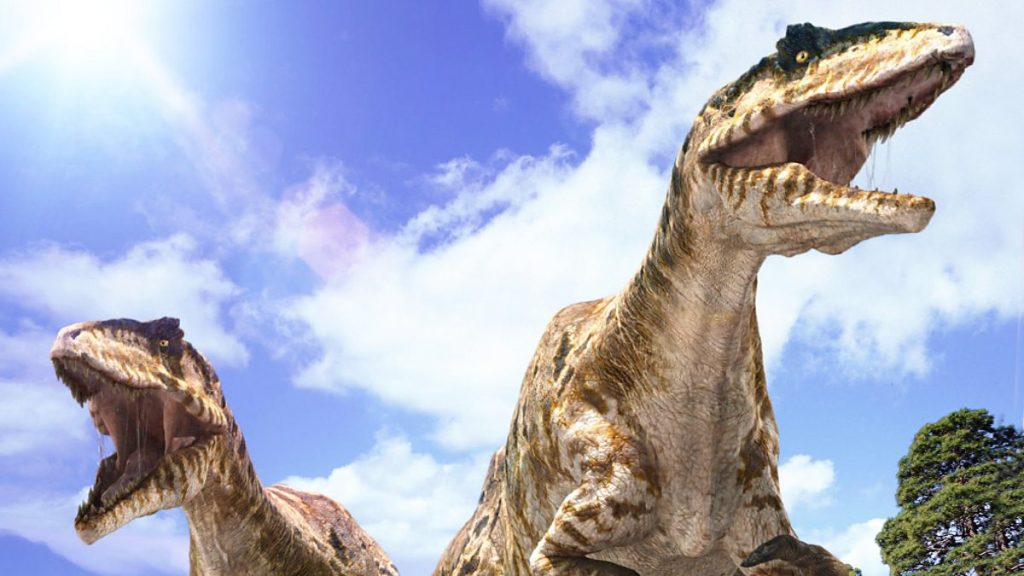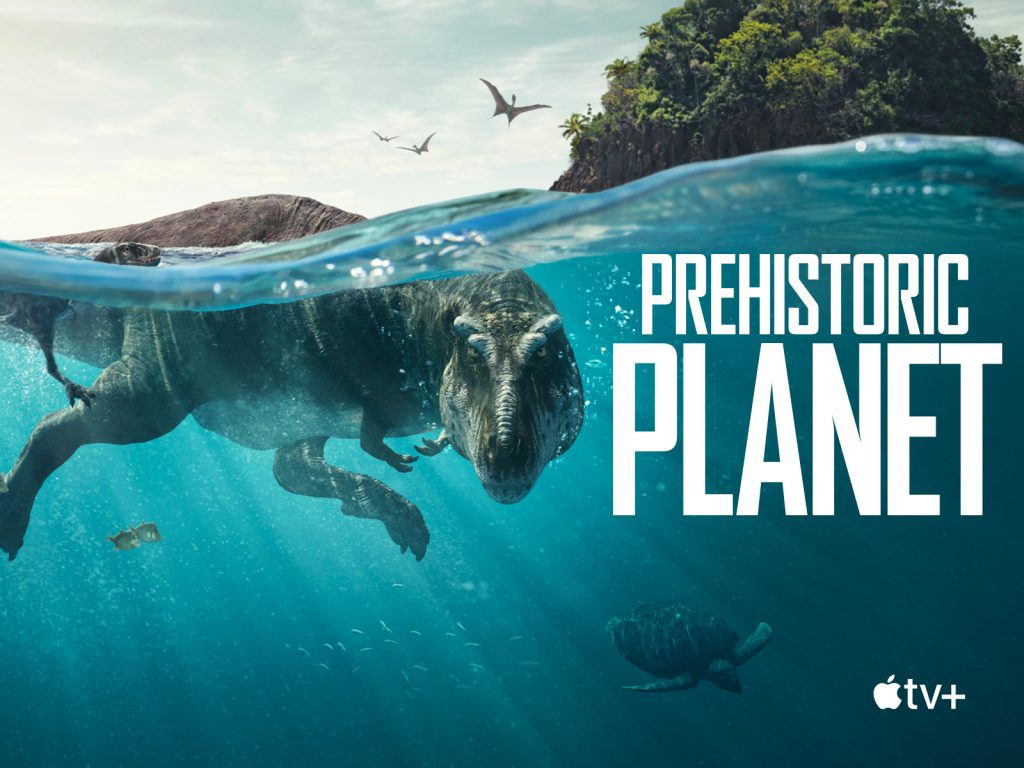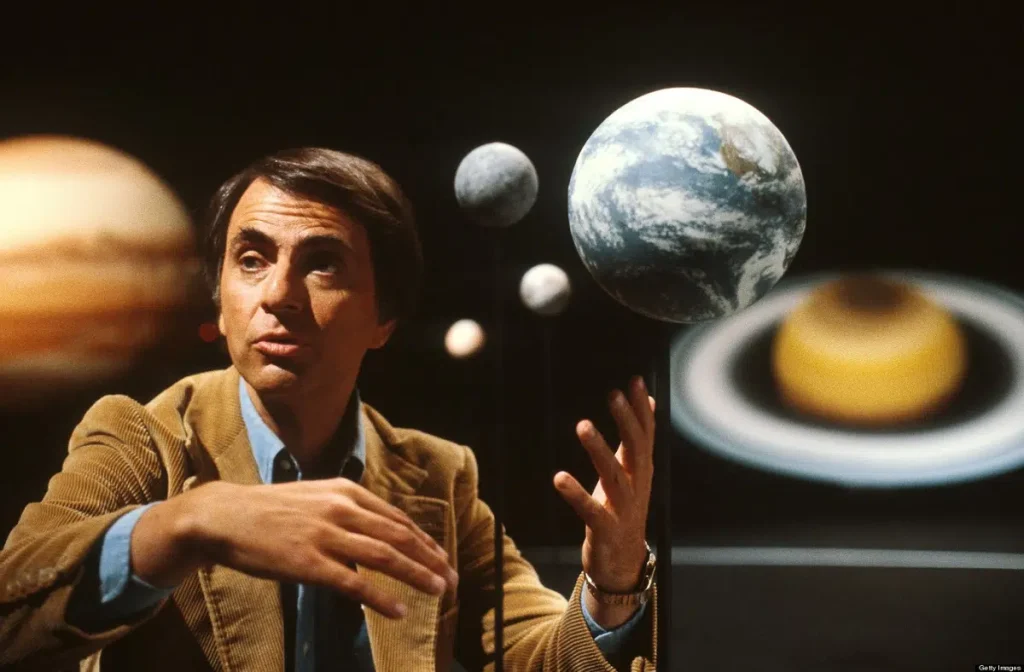Country: United Kingdom
Language: English
Genre: Documentary
Format: Television series (1 season, 6 episodes)
Director: TIm Haines, Jasper James
Production Company: BBC Science Unit
Network: BBC One
Running Time: 30'
Walking with Dinosaurs, first aired in 1999, was a groundbreaking series that redefined how we visualise prehistoric life. Produced by the BBC and narrated by Kenneth Branagh, it combined scientific rigour with computer-generated imagery (CGI) and animatronics to create a vivid portrayal of dinosaurs in dynamic environments. This wasn’t just a documentary; it felt like a natural history broadcast from a time machine, creating the illusion of observing living creatures in their natural habitats.
Part of the series’ impact lies in how it navigated the aesthetic expectations set by earlier cinematic milestones, notably Jurassic Park (1993). Steven Spielberg’s film had already revolutionised dinosaur imagery with its groundbreaking CGI, presenting dinosaurs as agile, dynamic, and emotionally resonant creatures. Walking with Dinosaurs inherited this aesthetic shift, embracing the sleek, kinetic portrayal of species like Velociraptor and Tyrannosaurus rex, and adapting it within a pseudo-documentary format that mimicked wildlife films. The result was a visual language that blended scientific hypotheses with cinematic flair, shaping not just what dinosaurs might have looked like, but how audiences expected them to behave.
Yet, while Walking with Dinosaurs strove for scientific accuracy, it also made creative choices that reflect the tension between data and dramatisation. For example, the depiction of Liopleurodon as a gigantic marine reptile reaching lengths of over 25 meters is a striking visual, but paleontological evidence suggests a more modest size, likely closer to 6-7 meters. Similarly, the portrayal of the giant sauropod Diplodocus engaging in speculative behaviours, such as using its tail like a whip to deter predators, was based on hypotheses that have since been debated within the scientific community. These choices, while enhancing the narrative spectacle, highlight how animation doesn’t just visualise extinct life—it actively shapes our understanding of it.
The series also reflects the limitations of its time. Although feathered dinosaurs were already discussed in palaeontology by the late 1990s, Walking with Dinosaurs portrayed species like Velociraptor without feathers, favouring a reptilian, scaly appearance. This decision likely stemmed from both the incomplete fossil record at the time and the need for visual continuity with established dinosaur imagery. Even the colour schemes chosen—vivid and sometimes speculative—served to enhance the dramatic effect rather than strictly adhere to scientific data, given the limited information about dinosaur pigmentation.
The success of Walking with Dinosaurs led to several follow-ups and spin-offs that expanded its scope. Walking with Beasts (2001) explored life after the dinosaurs, focusing on the rise of mammals, while Walking with Monsters (2005) took viewers even further back, into the Paleozoic era. These series retained the original’s blend of CGI and animatronics but introduced refinements in visual effects and narrative structure. The franchise also ventured into theatrical formats with Walking with Dinosaurs – The Arena Spectacular, a live show featuring life-sized animatronic dinosaurs that toured globally, demonstrating the enduring appeal of these reconstructions beyond the screen.
In 2013, Walking with Dinosaurs: The 3D Movie attempted to reintroduce the franchise to a younger audience, incorporating voice-over dialogue for the dinosaurs—a significant departure from the documentary-style narration of the original. While visually impressive, this shift towards a more conventional animated film format diluted the scientific gravitas that had defined the original series.
The influence of Walking with Dinosaurs extends beyond its direct sequels. It set a new standard for natural history documentaries, inspiring similar productions like Planet Dinosaur (2011), which benefited from advancements in CGI to depict more scientifically up-to-date reconstructions. Moreover, its stylistic approach—treating prehistoric life with the same documentary techniques used for contemporary wildlife—has become a template for visualising not only extinct species but also other phenomena invisible to the naked eye, from cosmic events to microscopic worlds. Another recent iteration of the Walking with Dinosaurs style can be appreciated in the series Prehistoric Planet. In 2025, a remake of the original series is set to be released. This new rendition promises to integrate the latest paleontological discoveries, including updated reconstructions of feathered dinosaurs and more accurate depictions of prehistoric ecosystems, by using state-of-the-art CGI and immersive sound design.
What made Walking with Dinosaurs particularly compelling was its documentary-style presentation. The virtual “camera” simulated the techniques of real wildlife filmmaking: shaky close-ups, dramatic pans, and seemingly candid observations of predation, migration, and social interaction. This stylistic choice, powered by CGI, transformed static scientific facts into emotionally engaging stories, blurring the line between observation and dramatisation.



